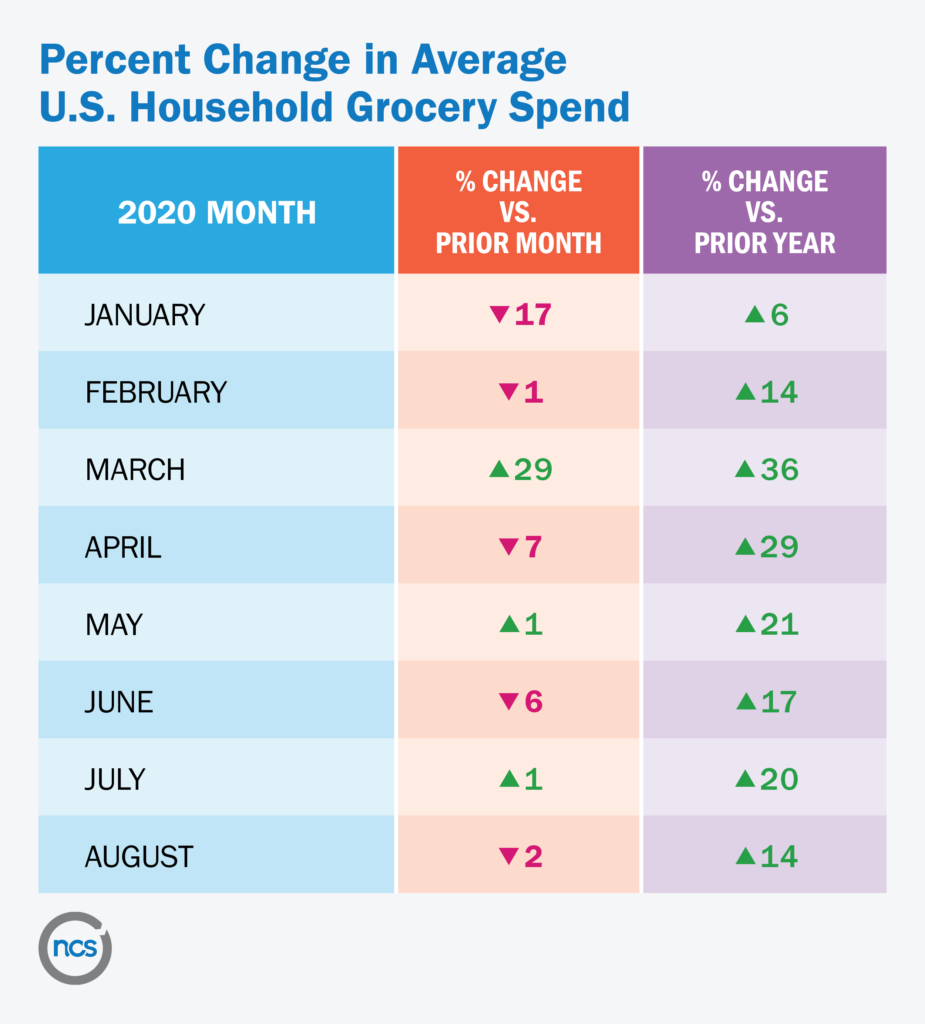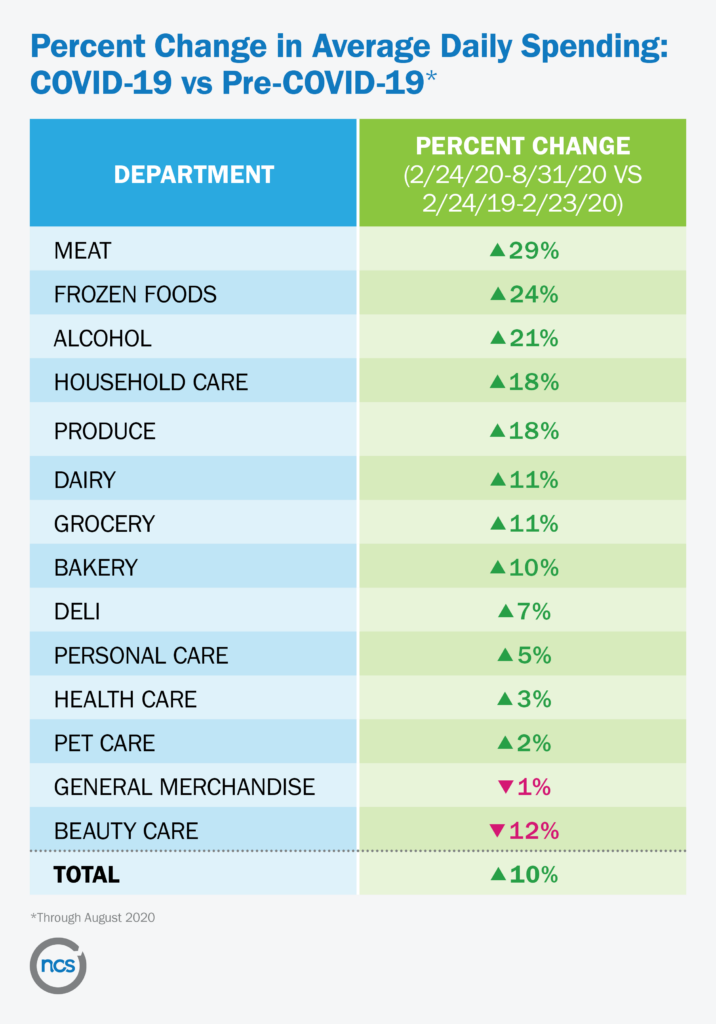THE TIMES, THEY ARE A-CHANGIN’
Over the past six months, the world has experienced the defining event of a generation. Needless to say, the COVID-19 pandemic has resulted in sweeping changes across almost all parts of life.
Here on this blog, we’ve shared what that change has looked like at the grocery store. We’ve talked about how the pandemic has impacted holiday-related CPG spending (it’s up, in case you were wondering), which categories are being bought differently (breakfast, anyone?) and monitored categories that have frequently been out of stock.
Today, we’re taking a look at the big picture of grocery shopping. Although most states have loosened regulations and people are becoming increasingly comfortable with venturing out, it would appear that many American’s used their quaran-time to hone those home cooking skills. From February 24th through August 31st of this year, average U.S. household CPG spending rang in at 27% higher than pre-pandemic buying (February 24, 2019 – February 23, 2020), with a gradual leveling off since the period of Extreme Buying in March 2020.
Undoubtedly, we are cooking and eating more at home. Which is a trend we expect to stick around over the coming months, even if the numbers continue to gradually lessen. While we have seen a gradual downward trend, August saw a 14% increase over the year prior, which is higher than typical year-over-year growth.
The grocery departments that have experienced the highest increases in daily sales this year are Meat (26%), Frozen Foods (22%) and Alcohol (20%). Which makes complete sense, considering how cooking too many days in a row has most of us running for the freezer and a cocktail.
The Beauty department has experienced a 12% decrease, not surprisingly since the current culture allows for messy hair and scraggly beards on video calls (a change we hope never goes away).
Check out the charts below to see how shopping has changed over the last six months, and reach out if you’re looking for more specific data on how your brand has performed in relation to the trends.






